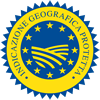Description
The Cipolla Rossa di Tropea Calabria PGI refers to the fresh or dry onion bulb belonging to the species Allium cepa L., limited to the Tondo Piatta (early-ripening), Mezza Campana (mid-season) and Allungata (late-ripening) native ecotypes. There are three typologies: Cipollotto (Spring Onion), Cipolla da Consumo Fresco (Fresh Onion) and Cipolla da Serbo (Onion for Preserving).
Production Area
The production area of Cipolla Rossa di Tropea Calabria PGI lies along the Tyrrhenian coast of northern Calabria and is within numerous municipalities in the provinces of Cosenza, Catanzaro and Vibo Valentia, in the Calabria region.
Production Method
Sowing begins in August and can be carried out directly in the fields, in nurseries or in modules, and when the plants are the right size they are transplanted. The harvesting period varies depending on the variety: for the Tonda Piatta or early-ripening onion, it takes place between mid-April and the end of May; between mid-May and mid-June for the Mezza Campana or mid-season onion; for the Allungata or late-ripening onion, it is carried out between mid-June and the end of July. After harvesting, the external tunic of the spring onion bulbs must be removed and the green tops trimmed by 30-60 cm; the onions are then tied in bundles and placed in crates. The green tops of the fresh onion bulbs, without the external tunic, are trimmed (35 to 60 cm if they are long), tied in bundles and placed in boxes or crates. The bulbs of the onion for preserving are left to dry in the ground for at least seven days, after which they are stored in a cool, dry place.
Appearance and Flavour
Cipolla Rossa di Tropea Calabria PGI is round or egg-shaped with a red skin, and is made up of white fleshy concentric tunics with a red external layer. It has an extremely sweet taste.
History
Historical and literary sources attribute the introduction of the onion into the Mediterranean basin, and in particular Calabria, to the Phoenicians and later the Greeks. Highly prized during the Middle Ages and the Renaissance, it was a basic food product that was important for the local economy, as it was sold and exported by sea to Tunisia, Algeria and Greece. Many travellers returning from Calabria between the 18th and 19th centuries described the marvels of the common red onion from Tropea, highlighting its sweet and subtle flavour. The Tropean red onion only started to become more widespread during the period of the Bourbons.
Gastronomy
Fresh Cipolla Rossa di Tropea Calabria PGI lasts for a few days, while if it is plaited it can be kept for up to a month. Thanks to its sweetness, it is particularly indicated for using in salads, combined with other vegetables and cheese. The green tops are also used to make omelettes. The dried onion is mostly used to make sauces, and the small bulbs are excellent for pickling. Cipolla Rossa di Tropea Calabria PGI is also used to make jams and mustards, which are ideal for pairing with cheeses and meat, as well as an ingredient in tasty appetisers like Cipolla Rossa di Tropea Calabria PGI “alla Tropeana”, where it is fried together with hot chilli peppers and then served on crostini.
Marketing
The product is marketed as Cipolla Rossa di Tropea Calabria PGI, in the following typologies: fresh Cipollotto (Spring Onion), Cipolla da Consumo Fresco (Fresh Onion), in large and small bunches; dry Cipolla da Serbo (Onion for Preserving), in plaits or loose in net bags.
Distinctive Features
The pleasant flavour of Cipolla Rossa di Tropea Calabria PGI is given to genetic, climatic and pedologic factors; it is the interaction between the three that determines the excellent organoleptic properties. If these three factors did not coexist, or if the onion was cultivated elsewhere, the product would not be nearly so appetising.









































